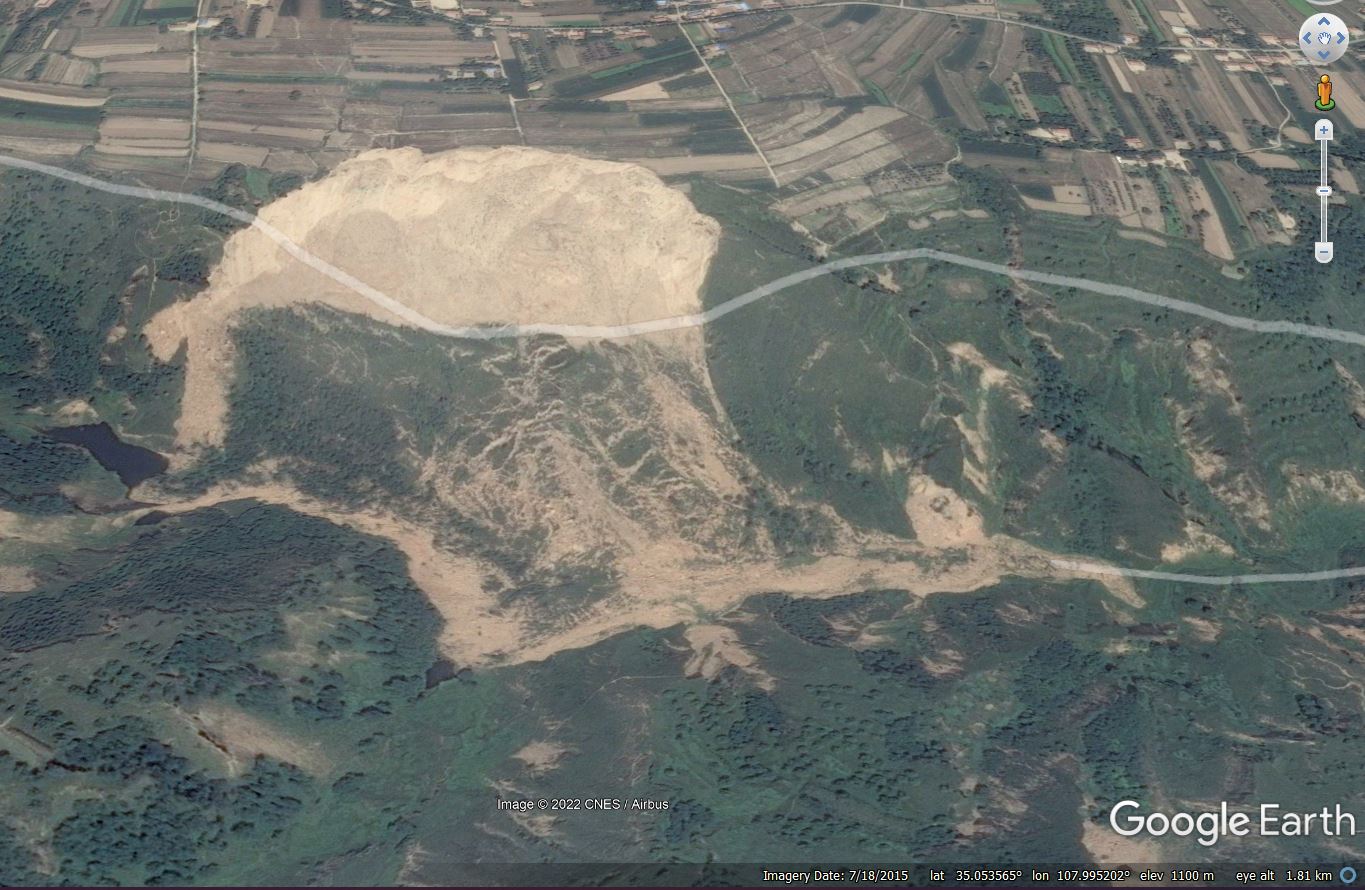3 October 2022
Shuiliandong: an example of a landslide triggered by underground coal mining
Posted by Dave Petley
Shuiliandong: an example of a landslide triggered by underground coal mining
I’ve written extensively about landslides triggered by mining activities, including failures in mine waste (most notably tailings dam collapses) and failures in rock slopes. I’ve written rather less about surface landslides triggered by subsidence from subterranean mining, even though this can be a substantial problem. In a paper published in the journal Landslides (Ma et al. 2022), such an example is featured, associated with deep coal mining at Shuiliandong, located in Shaanxi Province in China. Infuriatingly, the paper provides little detail on the actual location (this happens repeatedly), but I have tracked it down. The mine itself is located at 35.049, 108.032.
The mine, which is still active, extracts about 1.35 million tonnes of coal per year from a seam about 340 m below the surface. Ma et al. (2022) report that it has triggered extensive subsidence, including large fissures. A village located above the mine workings has been so badly damaged that it has been forced to relocate.
The authors highlight one landslide in particular, located 35.052, 107.997. The image below, from Google Earth, shows the landslide shortly after failure – the image was collected in 2015:-

The mining-induced landslide close to Shuiliandong in China. Google Earth image collected in 2015.
.
This is a large failure – 529 m long and 504 m wide according to Ma et al. (2022), with an average depth of about 37 m. Note the toe of the landslide extending down the valley. The volume is about 3 million cubic metres.
Ma et al. (2022) have simulated the formation of this landslide. The suggest that the failure was preceded by extensive ground fissuring as the subsidence bowl developed. This led to extensive fracturing at the toe of the slope, which in turn initiated failure. They also suggest that the fissuring and ground deformation may have created preferential pathways for the passage of water through the ground, allowing failure to develop.
It is notable that the image above shows other areas of deformation in the slope, indicating the mining-induced slope instability may continue to be a problem at Shuiliandong.
The capacity for deep mining to trigger slope instability has been known for well over a century – examples from South Wales are well documented for example. That such disruption can occur now is disappointing.
Reference
Ma, S., Qiu, H., Yang, D. et al. 2022. Surface multi-hazard effect of underground coal mining. Landslides. https://doi.org/10.1007/s10346-022-01961-0


 Dave Petley is the Vice-Chancellor of the University of Hull in the United Kingdom. His blog provides commentary and analysis of landslide events occurring worldwide, including the landslides themselves, latest research, and conferences and meetings.
Dave Petley is the Vice-Chancellor of the University of Hull in the United Kingdom. His blog provides commentary and analysis of landslide events occurring worldwide, including the landslides themselves, latest research, and conferences and meetings.
Good Job!